Opal doublets are crafted by layering a thin sheet of opal onto a base of epoxy and ironstone. Ironstone serves as the matrix or host rock where opal is commonly found. In the construction of doublets, the combination of black epoxy and ironstone acts as a protective layer, preventing any light or colors from escaping through the opal. This technique allows the opal's full spectrum of colors and inherent beauty to be showcased on the surface, ready to be admired.
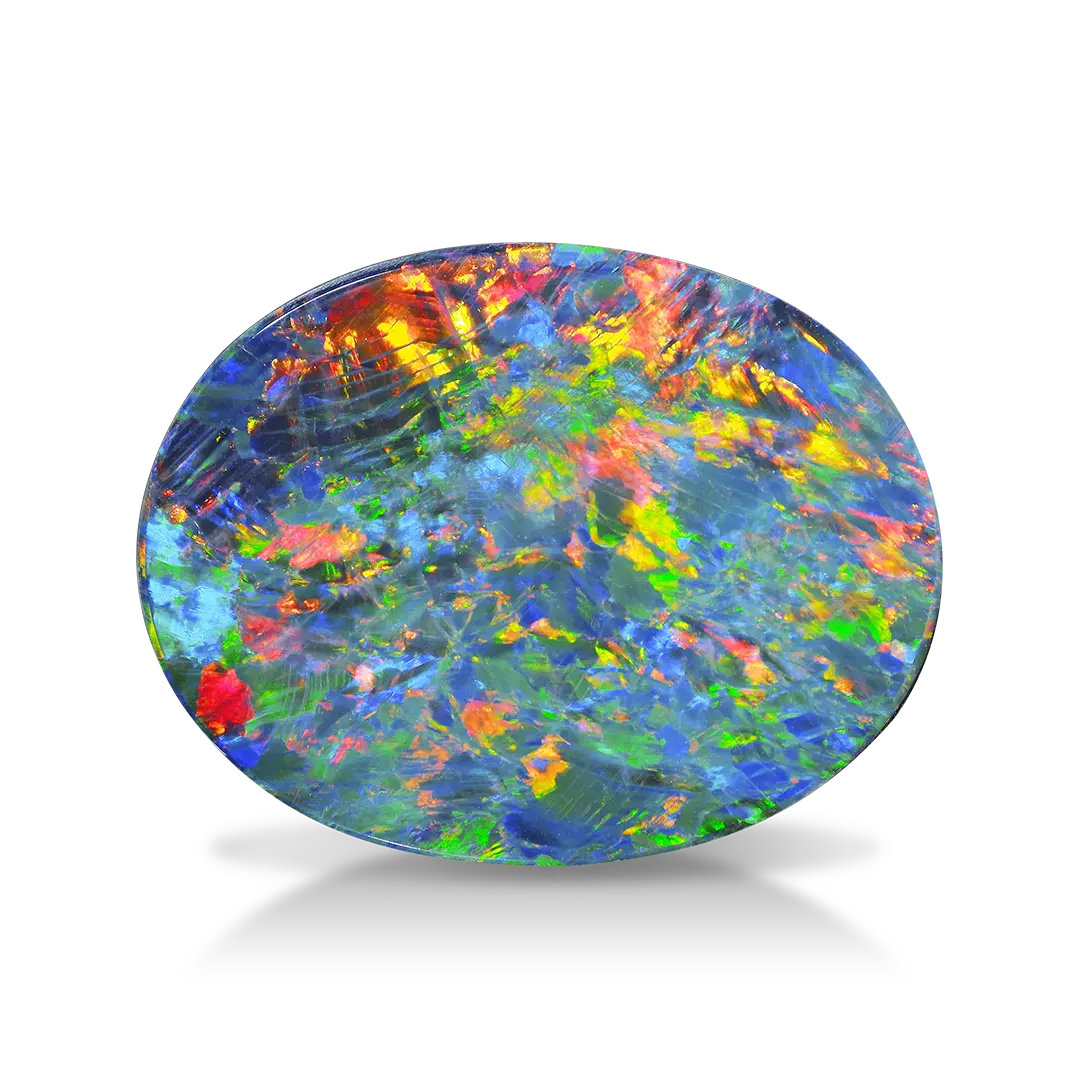
Opal, the chameleon of the gemstone world, encompasses the essence of countless colors within its vibrant existence. Revered as "The Rainbow Stone" by Australia's Aboriginal people, Opal stands as a testament to nature's awe-inspiring creations.
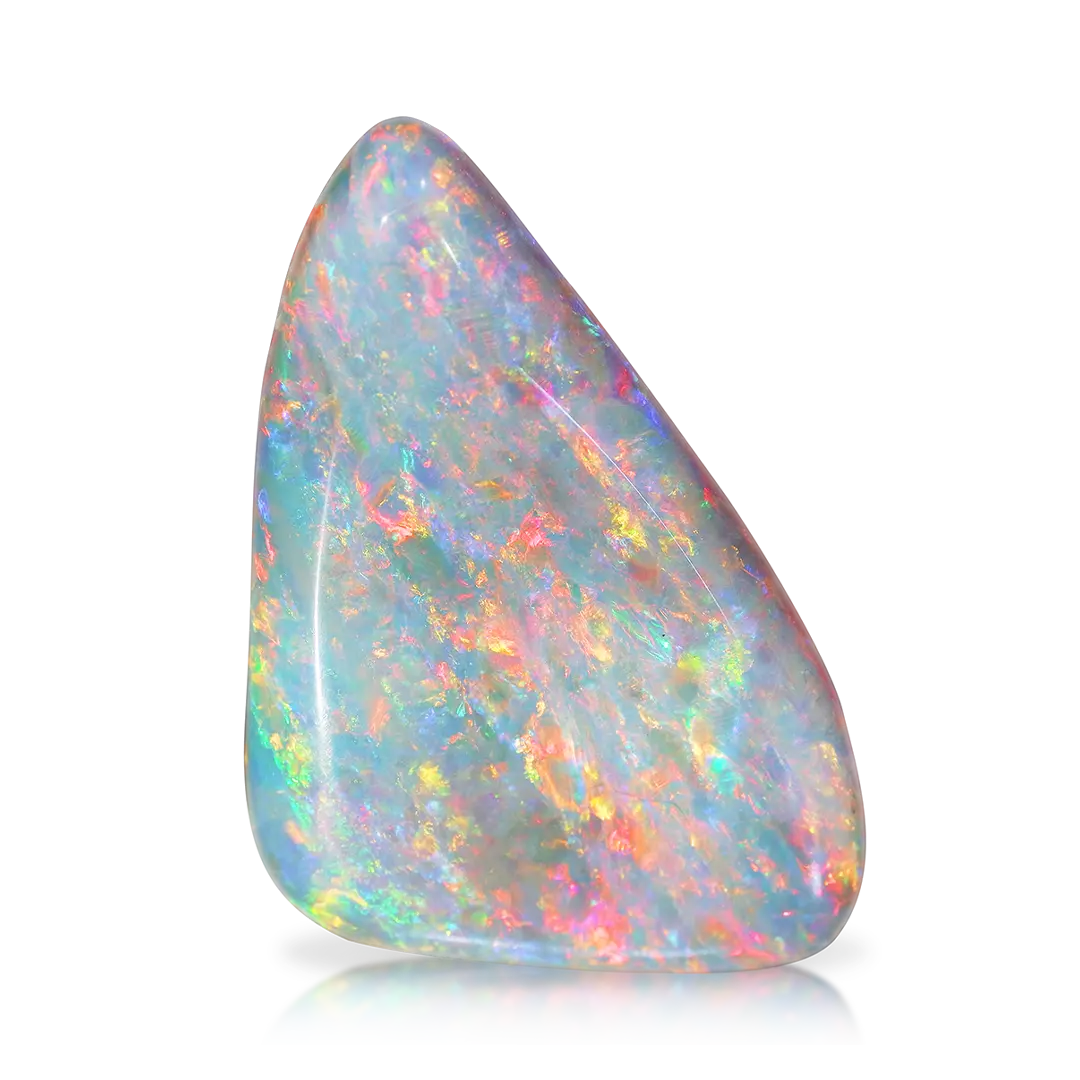
Boulder opal, a distinctive type of opal, is primarily found within ironstone boulders in the region of Queensland, Australia. These opals possess a unique appearance, with iridescent colors embedded into the stone and interlaced with dark brown, black, and gray veins. This natural pattern running through the opal gives boulder opals their exceptional and individualized charm. To preserve the opal's inherent beauty, they are often cut into freeform shapes, allowing the natural pattern to shine through.
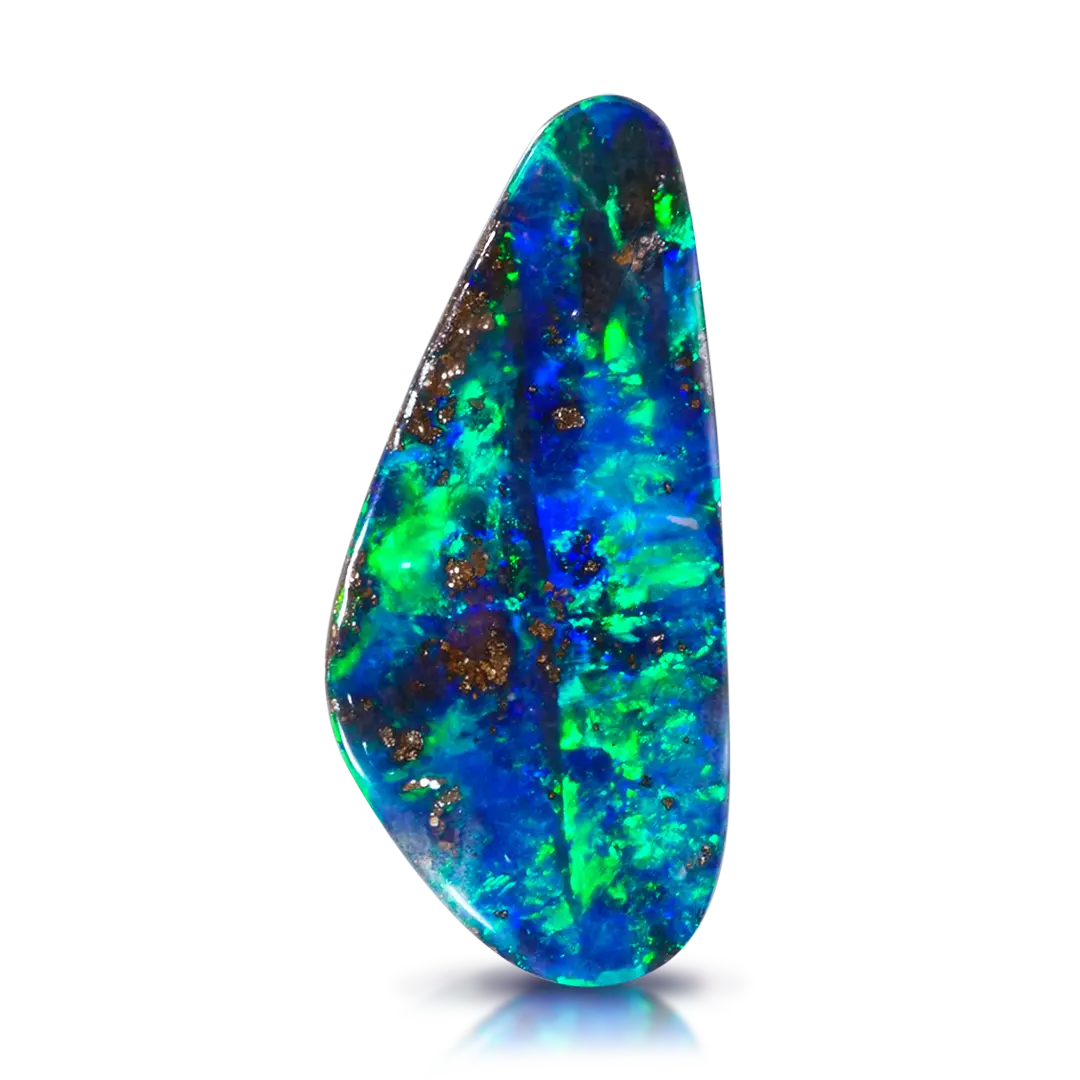
Opal, esteemed by the Ancient Romans as the "Queen of Gemstones," holds a special place in the world of precious stones due to its ability to encompass the full spectrum of rainbow colors. Its dark body color serves as the perfect backdrop to showcase the mesmerizing play-of-colors exhibited within the gemstone

Watermelon tourmaline is a captivating variety of tourmaline, showcasing a parti-colored composition reminiscent of the vibrant hues found in a watermelon's rind and flesh. Its delightful combination of pink, white, and green tones contributes to its unique charm, making it a wonderful additional birthstone option for the month of October.

Fire opal is highly valued for its captivating display of fiery reds, oranges, and yellows, setting it apart from the rainbow colors often associated with Australian opal. This unique coloration of fire opal can be attributed to its high iron content, which contributes to its distinct hues. While fire opal may not exhibit the play-of-color characteristic found in some opals, its vibrant shades remain a primary allure.
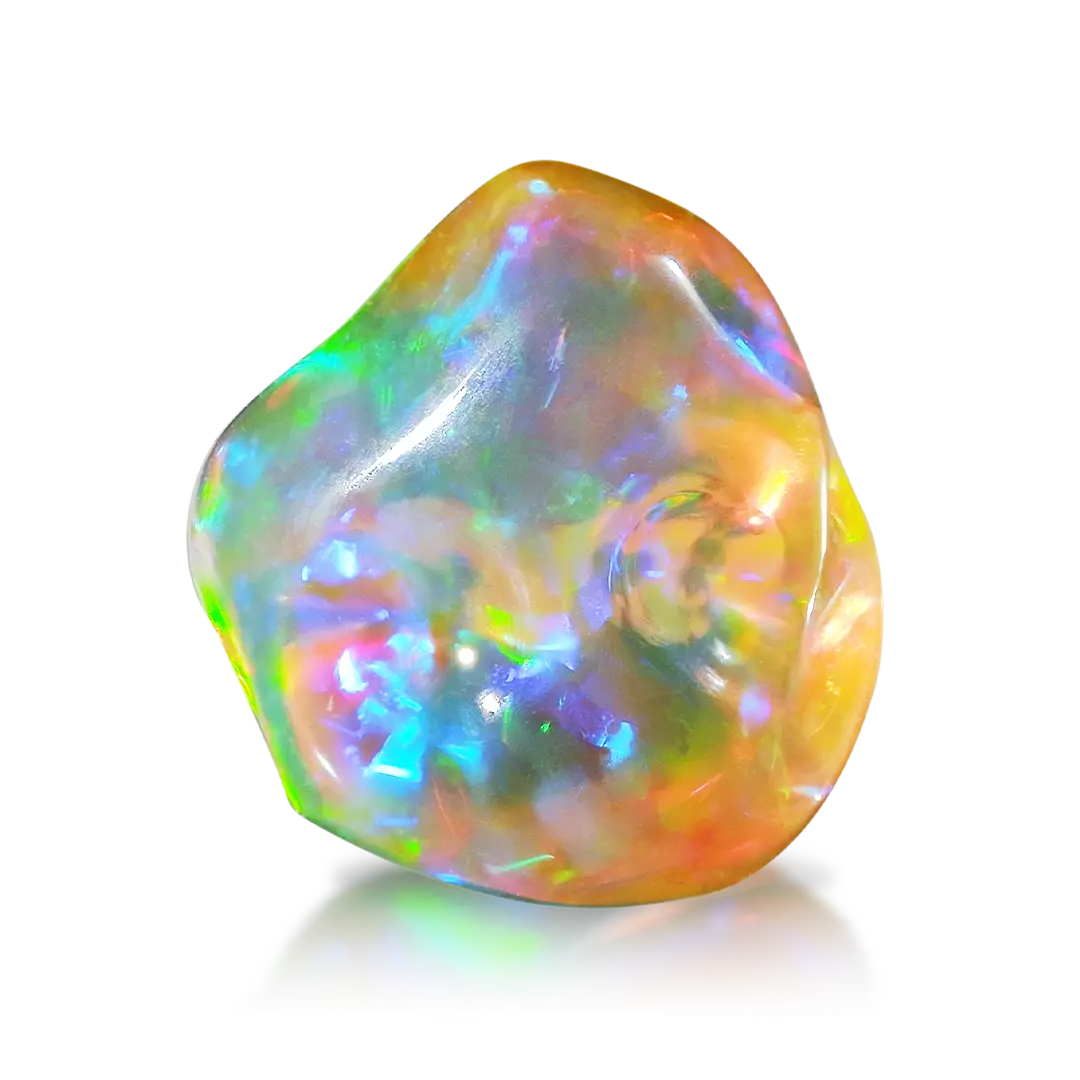
Sapphire, a highly esteemed gemstone, boasts remarkable hardness and a diverse color palette. With a Mohs hardness rating of 9, it resists scratches and abrasions, making it exceptionally durable for jewelry.
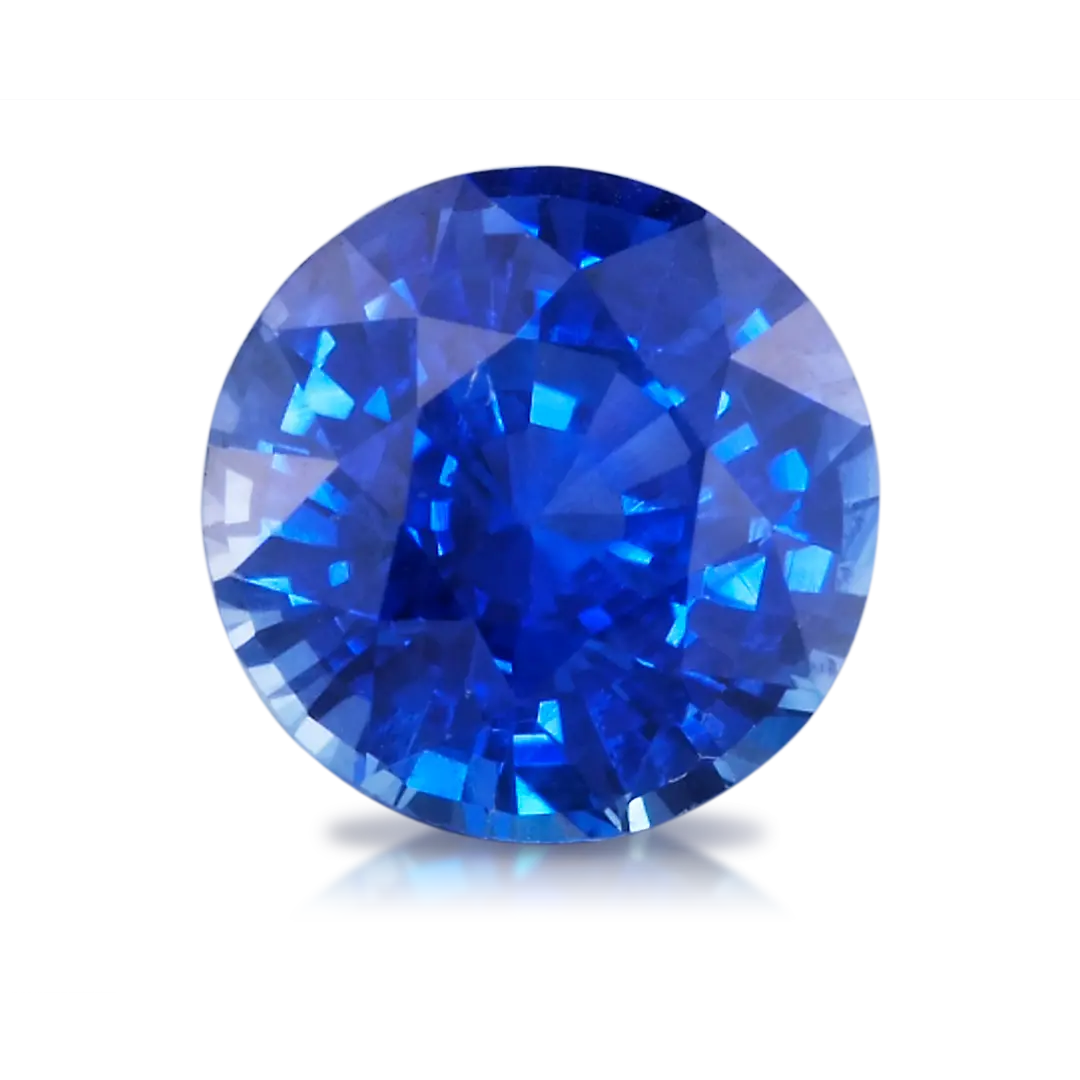
Montana Sapphire, with its rich history, traces its origins back to the era of gold prospectors in 1865 when it was first discovered. During the Montana gold rush of the 1870s, these sapphires were mined alongside gold, creating a unique association with this transformative period. At Parlé, we take pride in sourcing Montana sapphires specifically from the Rock Creek deposit situated in Philipsburg, Montana, ensuring the highest quality and authenticity.

Yogo sapphire, a truly extraordinary gemstone, holds a special distinction within the realm of precious stones. It is exclusively found in the picturesque Yogo Gulch of Montana, rendering it a gem of rare origin. What sets Yogo sapphire apart is its mesmerizing cornflower blue hue, which remains untouched by any form of heat treatment or enhancement. This natural and unaltered beauty, combined with its limited supply, has elevated the gem's desirability among collectors worldwide.

Emerald, belonging to the beryl family, obtains its captivating green color from the presence of the trace element chromium. As a characteristic feature of emeralds, it is not uncommon to observe inclusions within the gemstone, which are a result of the crystal's growth conditions and structure.
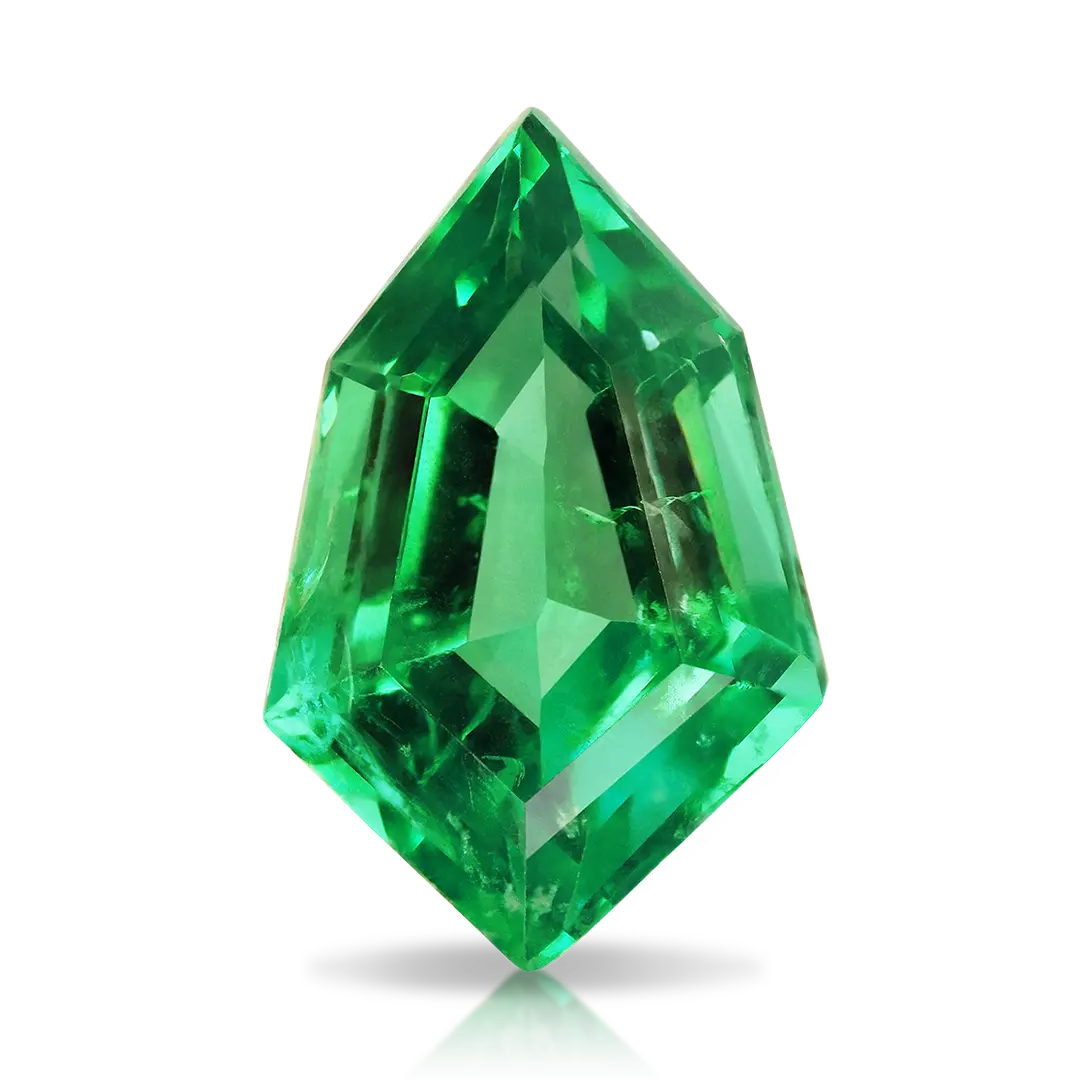
Ruby, with its radiant red hue, has long been coveted by individuals throughout history. The deep and lustrous red color of rubies evokes feelings of desire and passion, rendering it one of the most romantic gemstones. As the most valuable variety of corundum, ruby obtains its vibrant color from the presence of trace amounts of chromium.

Peacock tanzanite, a unique variant derived from tanzanite mining, offers a rare and untreated version of the well-known zoisite gemstone. Distinguished by its exquisite blend of purple, blue, and green hues, reminiscent of the vibrant colors found in peacock feathers, peacock tanzanite showcases a captivating and distinct appearance.
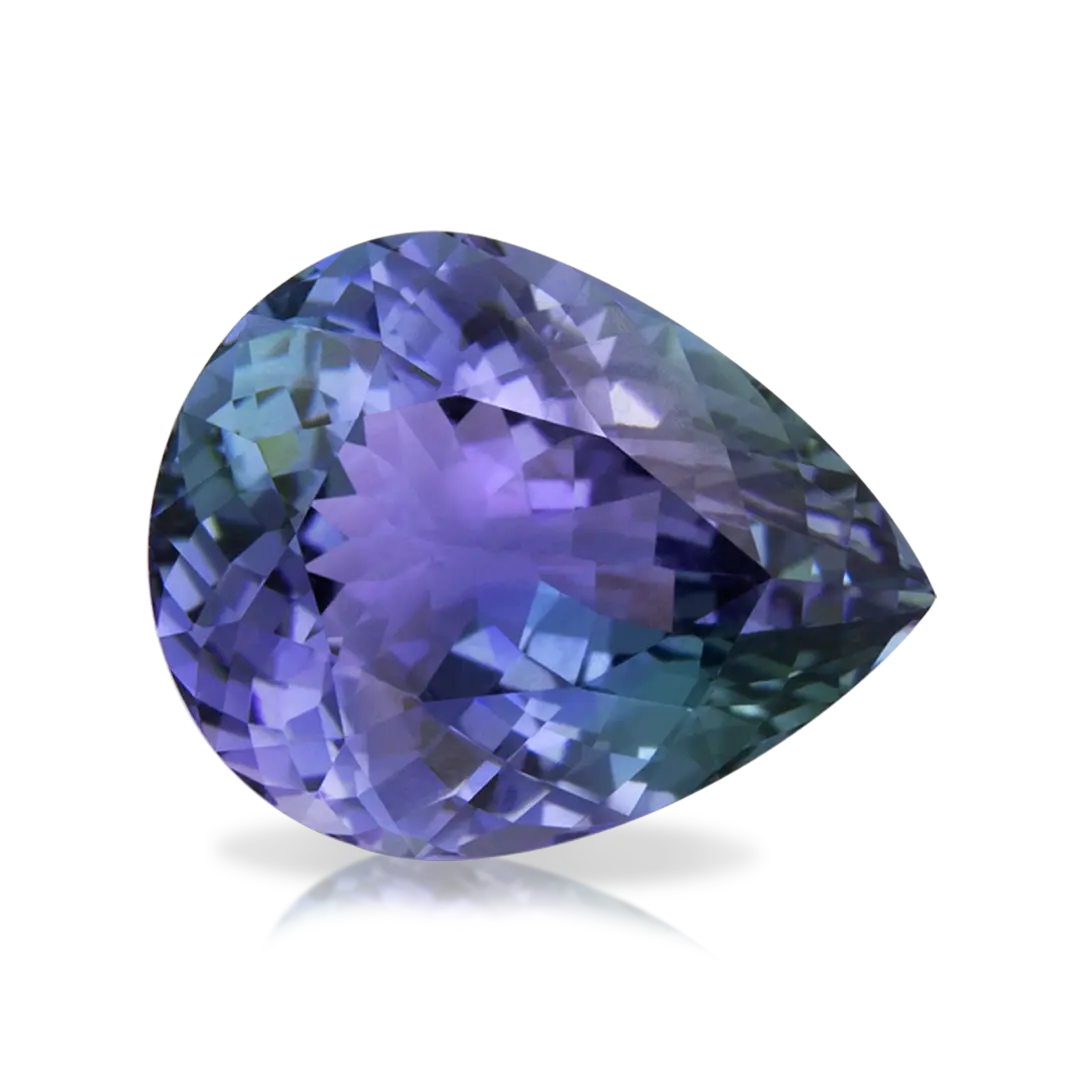
The remarkable discovery of purple garnet in Mozambique just a few years ago marked a significant milestone in the gemstone world. This particular shade of vivid purple is unique to Mozambique, with no other location on Earth producing garnets of such extraordinary hue. The deposit of purple garnet is primarily found in alluvial settings, within riverbeds, resulting in abundant findings during the early stages of mining.
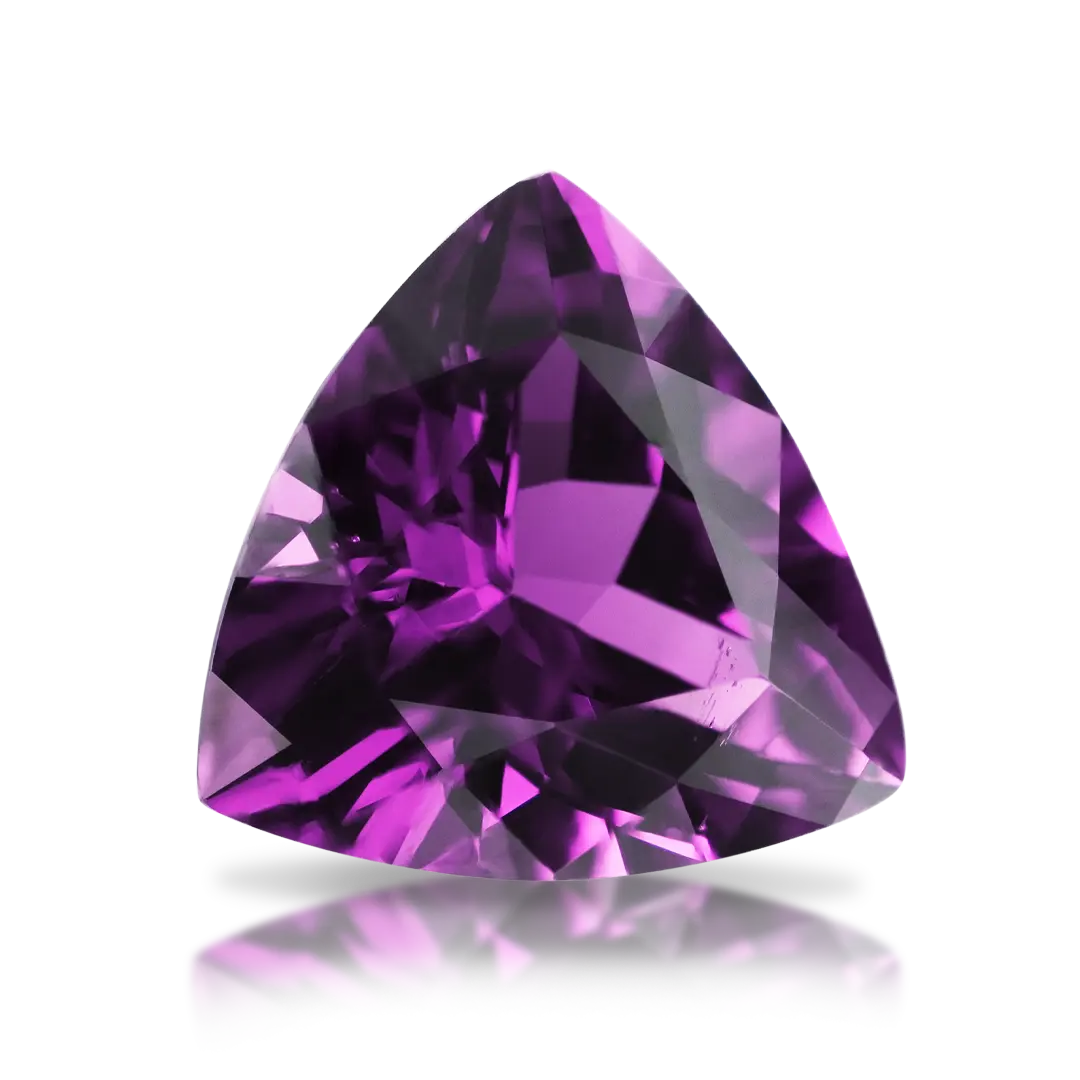
Lotus Garnet, a recently discovered gemstone in late 2015, was unearthed from the Mahenge region of northern Tanzania. Its occurrence is primarily found in alluvial deposits, with the exact quantity of rough yet to be determined. As a result, production remains limited, yielding small quantities with each extraction.
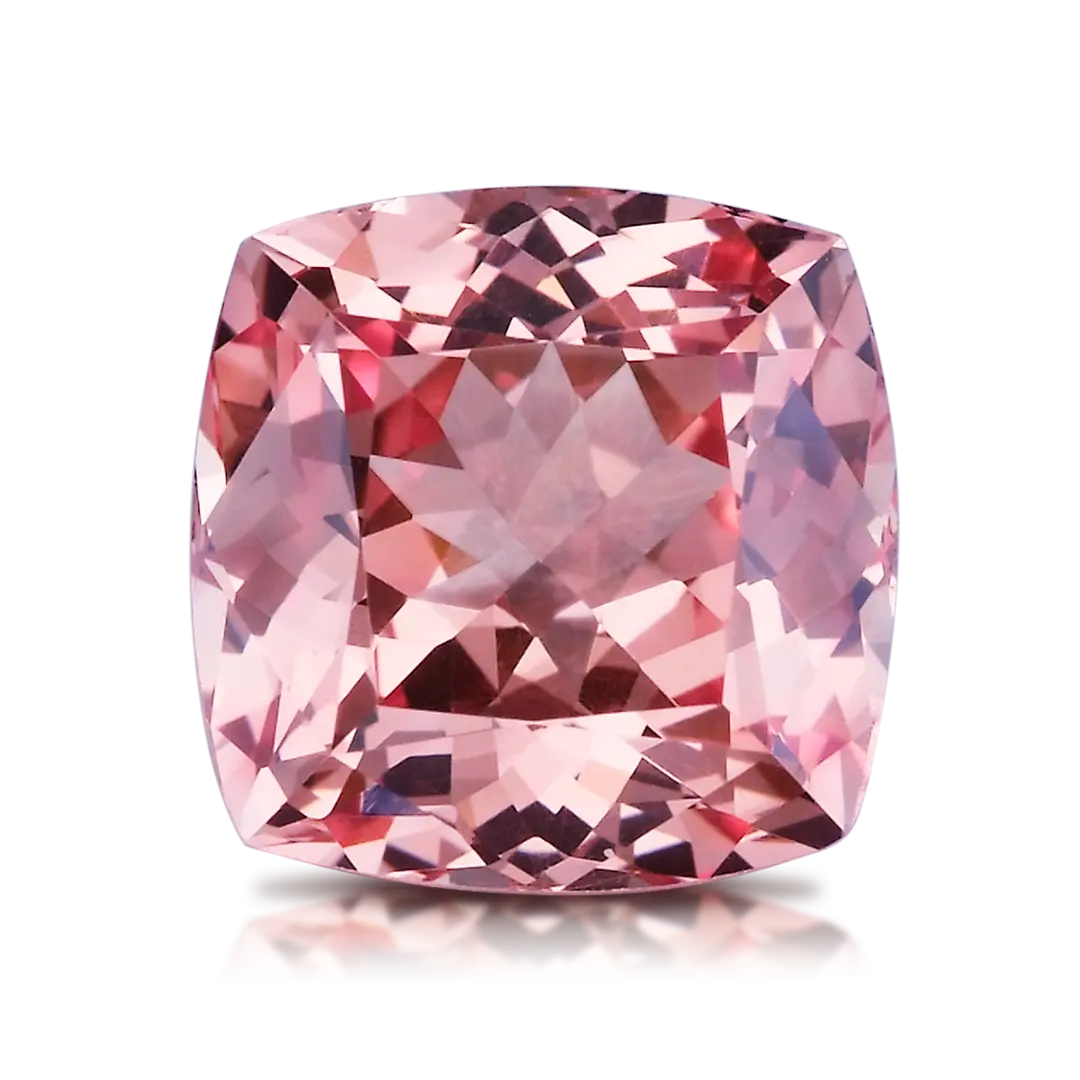
Merelani mint garnet derives its name from the region in Tanzania where it was initially unearthed. Belonging to the Grossular garnet family, it shares a close kinship with its counterpart, tsavorite garnet. The inherent qualities of garnet, such as its exceptional light reflection and luster, contribute to its appeal as a gemstone.

Tsavorite garnet, known as the emerald-green variety of grossular garnet, made its debut in the gemstone world in 1967 after its discovery in Tanzania. The name "Tsavorite" was bestowed upon it by Sir Henry Platt, representing Tiffany & Co., who drew inspiration from the Tsavo East National Park in Kenya.

Spessartite garnet derives its name from the captivating orange color it displays. This luminous gemstone is primarily found in the Serengeti plains of Tanzania, which possesses a remarkable geological composition enriched with manganese. Manganese, being one of the rarest minerals on the Earth's surface, acts as the trace element responsible for imparting color to this gemstone, giving it its vibrant allure.

Zircon, an ancient gemstone, has been known and admired for centuries. However, it is often mistaken for cubic zirconia, which is a synthetic material. Unlike its synthetic counterpart, zircon is a natural gemstone that displays a wide range of colors. Among the various hues, blue zircon stands out as one of the most popular and sought-after variations.
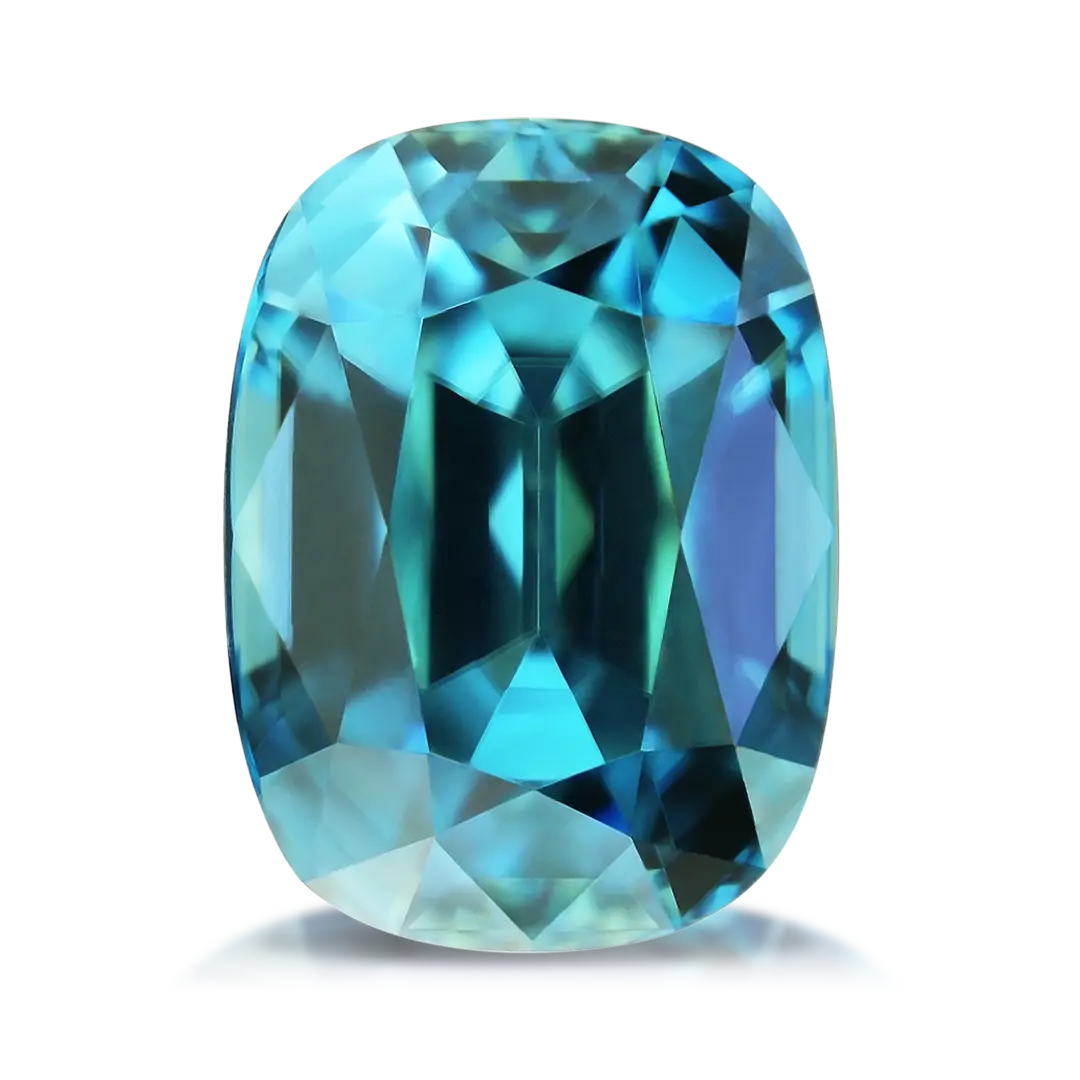
Aquamarine, a highly esteemed gemstone and member of the beryl family, boasts remarkable clarity and a serene blue to blue-green color palette. With a Mohs hardness rating of 7.5 to 8, it withstands wear and tear, making it a durable choice for jewelry. Formed over millions of years in pegmatite veins, aquamarine develops as large, well-formed crystals with distinctive hexagonal structures.

Tanzanite, celebrated for its stunning blue-violet hues, is one of the most captivating gemstones in the world. Found exclusively near Mount Kilimanjaro in Tanzania since its discovery in 1967, this rare gem has quickly risen to prominence for its vibrant color and exclusivity. Its single-source origin and high demand contribute to its significant value, making tanzanite a prized addition to fine jewelry and collections alike.
